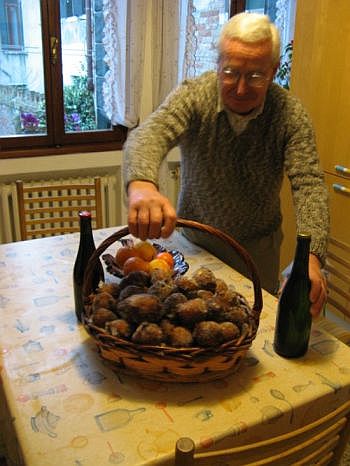Search results
83 results found.
83 results found.
Carnival has become one of my least favorite things about Venice, because each year its negative aspects increasingly outweigh the positive.
I am referring to the Mega-Commercial-Highly-Promoted Carnival whose vortex is the Piazza San Marco. But Carnival in its small, neighborhood version continues to charm me, mainly because it almost exclusively involves children (the smaller, the better) and their doting relatives. Random frolicking. Dressing up for no reason (by which I mean, not the reason of being photographed to, for, by, or with anyone, particularly tourists). Throwing fistfuls of confetti anywhere.
I don’t need to look at the calendar to know that Carnival has, as of today, officially begun. For the past few days the signs have been unmistakable.
Here are a few:
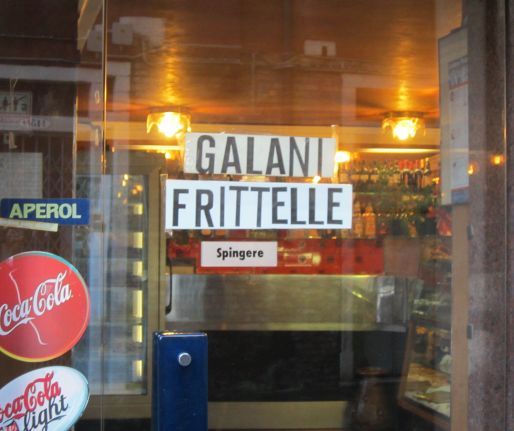
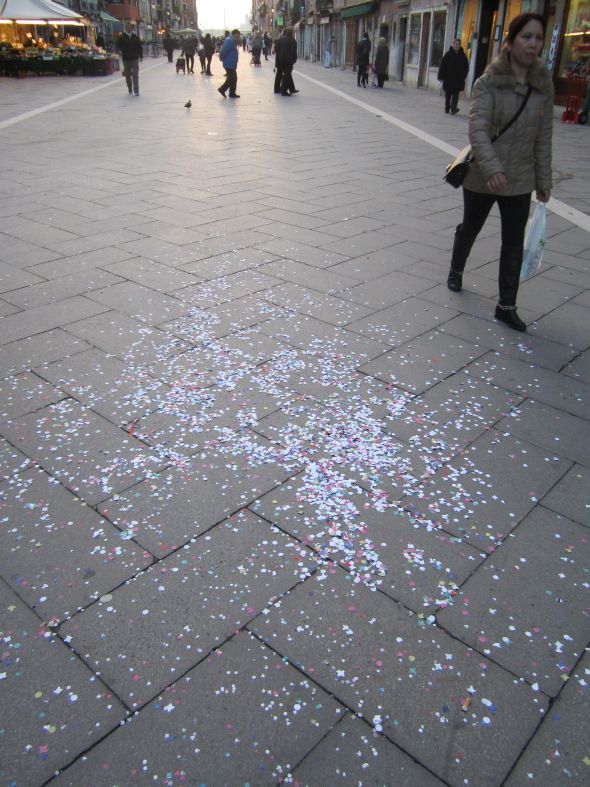
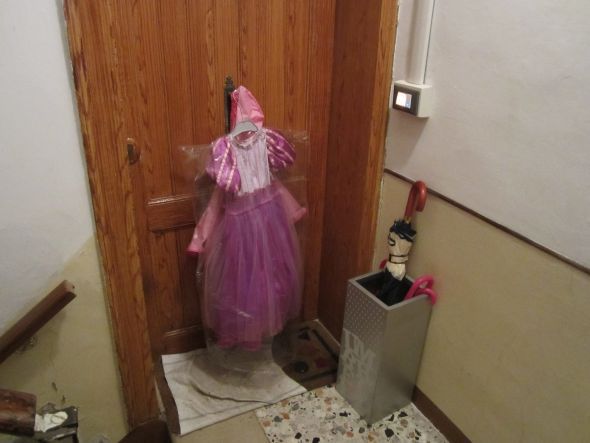

You know the old saying: “Expect nothing and you won’t be disappointed.” (Is that an old saying, or did I just make it up?)
Following that bit of wisdom gave me a Carnival which was modest to the point of self-abnegation. With lots of fritole. The only unpleasantness was the acqua alta, but it did not reach the predicted epic proportions. (In fact, let the record show that one positive aspect of the imminent threat of water in the house is that, when all the stuff was piled on our two pieces of furniture, I cleaned and washed and dusted objects and places which hadn’t seen the hand of man since we moved in.) We had no plans or projects or desires or dreams or anything which could have been frustrated or ruined. And we didn’t lose power.
Reading the rundown in yesterday’s Gazzettino, though, I get a picture of a Carnival which for lots of other people — most of whom had needs far surpassing ours, primarily to travel in some way or to some degree in the culminating days –should have been called, not “Live in Color,” but “Going to Hell in Color.”
If you wanted to come to Venice on Monday night, with or without an expensive costume — or more to the point, if you really wanted to leave Venice on Monday night — you’d have found yourself involved in a sort of Ironman Triathlon: Riding the Train/Bus, Crossing the Square, and Finding Your Way Home in the Dark.
I could write a long post full of details, and I’ll keep the paper for a few days in case anybody asks me for more information.
But the headlines howling from a few pages of the paper tell enough. The thing to keep in mind is that island Venice covers some three square miles; mainland Venice covers some 21 square miles (Mestre is 8 square miles, Marghera is 13 square miles). It’s not Mexico City. It’s not even Hampton, Connecticut.
Translation: How hard could it be to clear away some snow and keep the buses and trains running?
Answer: Hard. Very hard. Harder than building the Eupalinian aqueduct. Especially since it appears that nobody believed this storm was really going to hit.
There is a rundown in the paper of how many squads were working, and how many snowplows and salt trucks. Unfortunately, they must have been phantoms; hardly anyone seems to have seen either them or evidence of their passage. In fairness, I note that there were people out working to deal with it all. Not enough, but some.
The second thing to keep in mind is that this large and violent storm, with snow and high water thrown in at no extra cost, was forecast for at least three days. And it had already hit the west coast of Italy, and much of the south. In other words, it wasn’t some bizarre anomaly which struck without warning.
In the order in which they appear, starting on page one of the local section (translated by me):
Under the snow, the inefficiency of the Veneto. The prefect calls in the chiefs of public transport. Consumers resort to the Procura (that is, the court. The prefect is the local representative of the President of the Republic, and pretty much outranks everybody.)
The precipitation caught just about everybody unprepared, from the Comune of Venice to the trains and at the airport. There were photos of people deplaning and struggling across the slippery slush covering the tarmac to get to the terminal. The baggage handling system went haywire. And so on.
There were blackouts all over the place, including the train stations in Venice and in Mestre. Not only tourists, but lots of commuters were either stranded or left to wait indefinitely for trains that were late, late, and late.
SNOW PLAN, everything has to be redone. If you read the whole article, you’ll ask yourself what they think “plan” might mean, when you consider how it worked out. The plan is ten years old, for what that’s worth. And why, you ask, does the municipality keep a plan that has to be dusted every year because it’s never used until it’s useless?
Acqua alta, a night of terror. The wind saves Venice and Chioggia. As previously noted by me, but without the “terror” part, at least in our little hovel.
Bad weather freezes the arrivals; Fat Tuesday for 60,000. This would only concern people with something to sell, because it’s less than half of the numbers which were expected. Having fewer people around was the only good news I can see for emergency crews or any other group which had to contend with the breakdown of the plan. I mean “plan.”
Transport chaos: the prefect isn’t having it. Ca’ Corner (headquarters of the prefect) retorts to the accusations of the transport people and wants to shed light on the reasons for the inconveniences (meaning no excuses).
“Crushed in the few buses which left Piazzale Roma.” Needs no explanation except why there were so few buses, something the prefect also will be wanting to know. But remember that the buses to the mainland are operated by the ACTV, which has shown such impressive skill in managing transport by vaporetto.
Burano: Blackout on an island which finished under water — volunteers at work the entire night. High water doesn’t affect only Venice, when you stop to think about it. The people on the islands have to get out the mops too. In this case, they had to do it in the dark. Fun.
Between water and blocks of ice; the fear finishes at midnight. Bridges and streets slippery, people walking with tall boots alarmed (the people, not the boots) by the prediction of 160 cm. Merchants on alert. Nobody could help that there were blocks of ice floating around, which actually were more like heavy slushy shards; the street outside our door looked like the polar sea in spring, and so did the Piazza San Marco. Unlike the last acqua alta, there were no bare-chested tourists frolicking blithely in the gelid waist-deep water.
On the Giudecca, fondamente in the dark because the electricity was out.
Chemical toilets (port-a-potties) adrift in campo San Polo. Wow….
A storm of protests; the snow plan has to change. The Comune demonstrates the efforts made to deal with Monday’s weather emergency, but even City Hall admits that in the future it will be necessary to do much more. Brains on fire! Smoke coming out of their ears!
No buses at the hospital (in Mestre); the employees forced to sleep in the hospital.
And so on, and on, and on.
There are 220,000 Scouts in Italy; surely somebody in the Comune must have been a Scout at some time. But “Be Prepared” seems to have been replaced by “Let’s just hope for the best.”
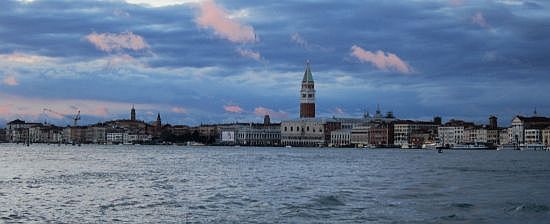

I haven’t communicated in a bit because I was waiting for Carnival to end (midnight last night, as everyone knows) so I could sort through the rubble and look for something to report.
Judging by the mass of photographs clogging my computer, I evidently found plenty to chronicle, but mainly within the confines of our little lobe of Venice. We didn’t go the Piazza San Marco even once; the revelers aboard the vaporettos were enough for me.
Every year, the organizers of this event form it around a particular theme, something they hope will be irresistible. This year’s title was “Live in Color,” but I can tell you that it ought to have been called “Drenched in Color,” or “Freezing in Color.” Or “Sloshing in Color.” The colors mainly being the blue of your bloodless fingers and the gray of your bloodless lips.
This year’s carnival was all about weather. In the space of the festivities (Jan. 26-Feb. 12), we got rain, wind, snow, and acqua alta. Sometimes together, sometimes separately. Several keystone events had to be reshuffled (one good reason to extend Carnival — this year, it was 18 days) not only because there wouldn’t have been any spectators, but because in some cases it would have been dangerous for the performers.
It didn’t matter to me because I hadn’t spent thousands of dollars making or renting a fabulous costume whose purpose in life was for me to wear it where people could see it and admire it and envy me. There are many people — primarily French — who spend months planning and preparing their appearance (not to the extent of the samba schools of Rio, but still). I hope they’ve taken home some beautiful memory.
The open salvo didn’t exactly make you want to dance: A headline at the start of Carnival announced that the President of the Province of Venice (bigger than the municipal area) had declared that she was banning confetti/coriandoli that would naturally be strewn festively by and among partyers in the main piazza of a town called San Dona’ di Piave. Why? Because “It makes a mess.” That’s the point! If there were any time in the year when it would be laudable to focus on civic hygiene, I’d say that Carnival isn’t it. But maybe this is her way of saying “We only have ten garbage collectors this month, please don’t give them more work to do.” Or, based on my experience in this neighborhood, don’t give them any work to do.
Here is a look at Carnival in ErlaWorld:

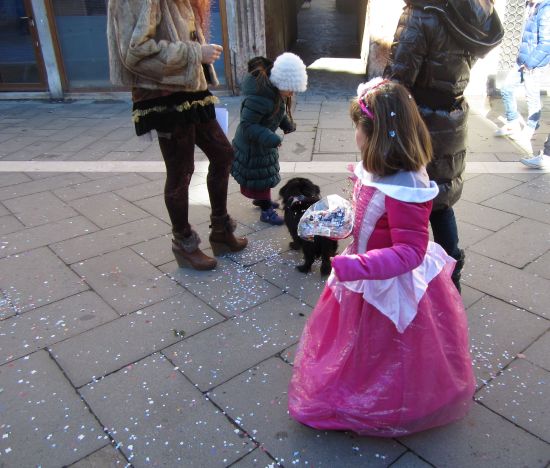
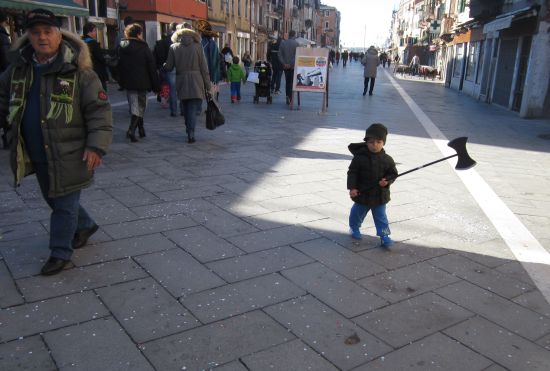
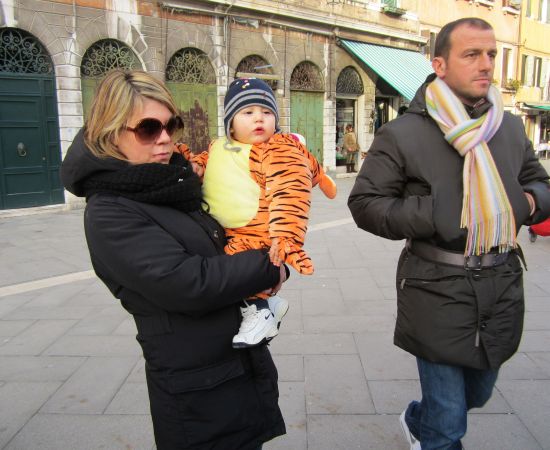
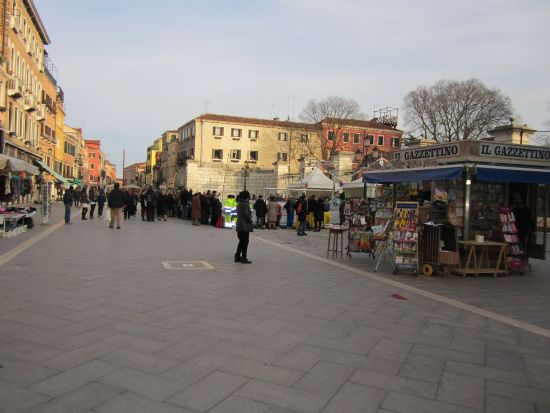
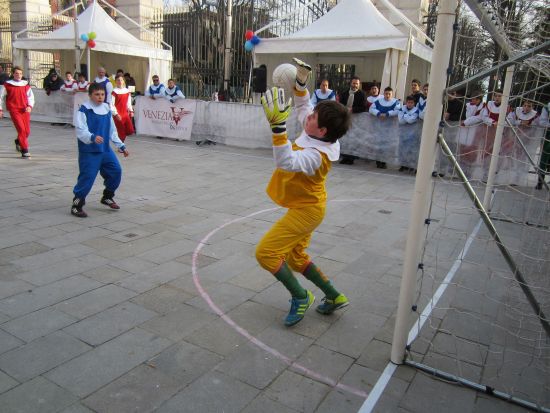


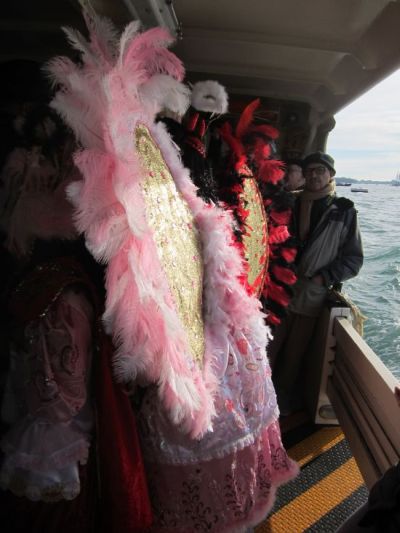
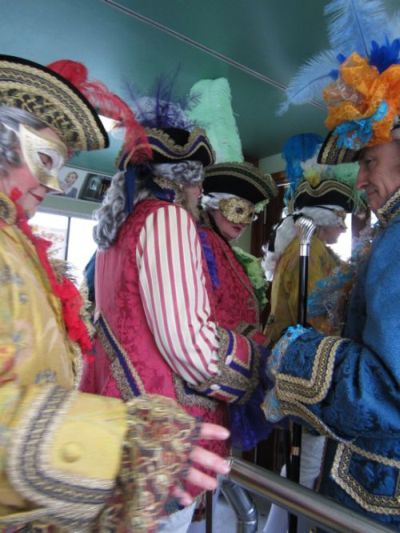

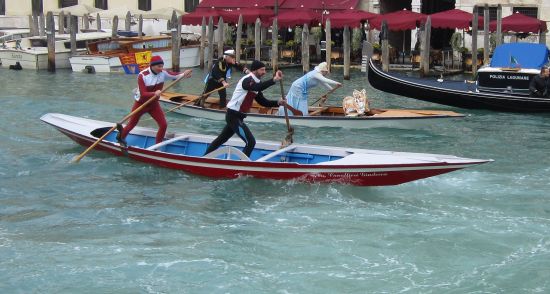
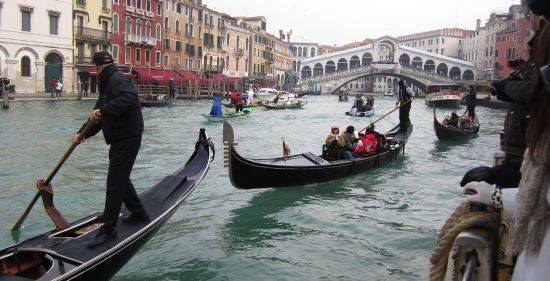
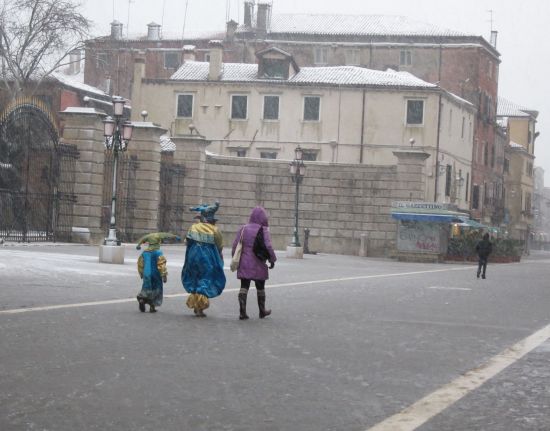
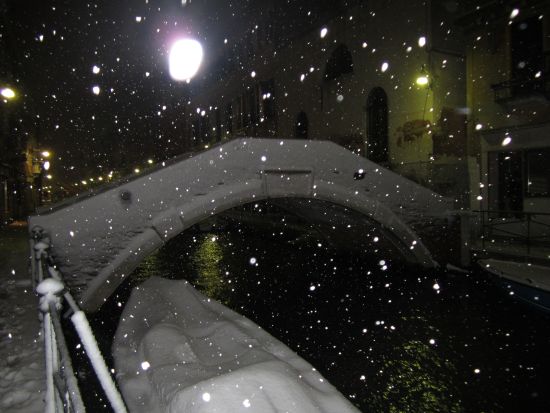
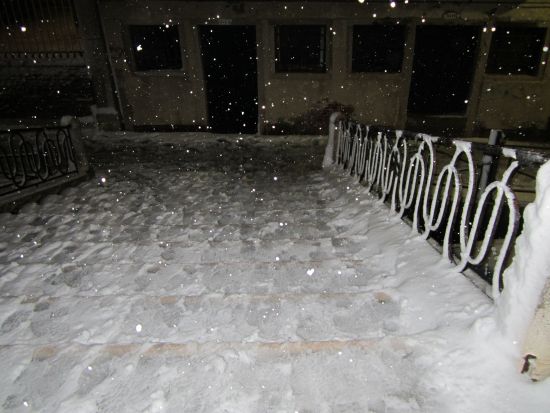
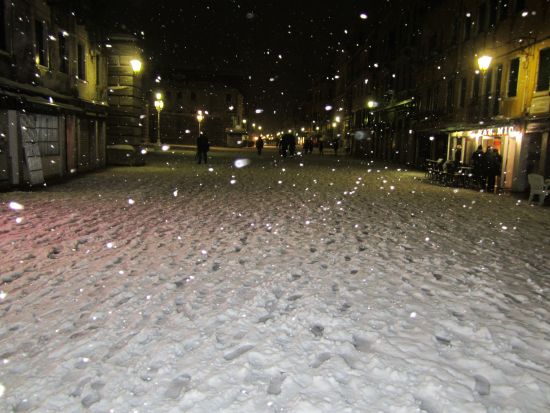
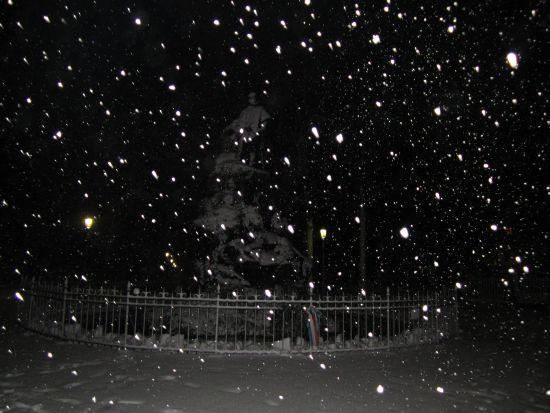
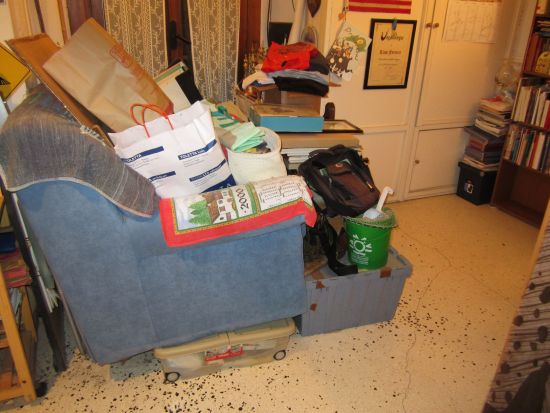
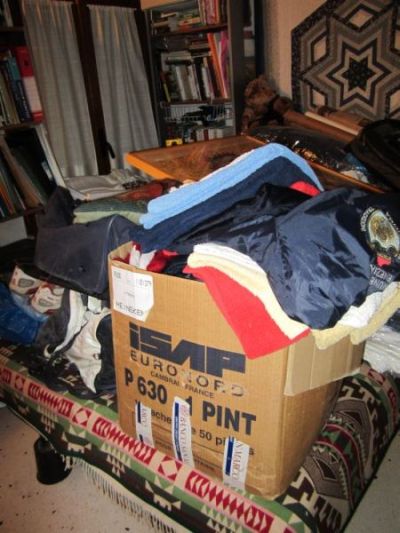

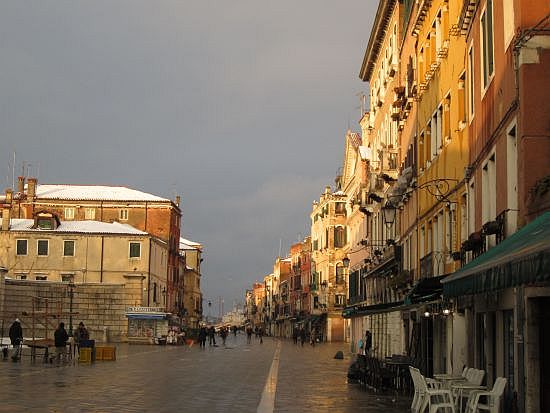

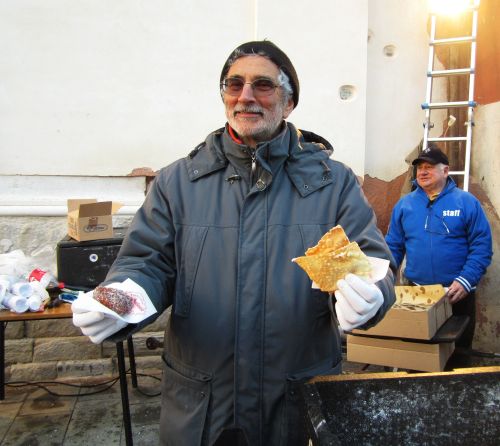
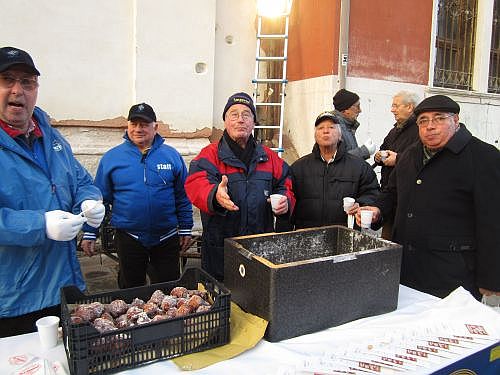
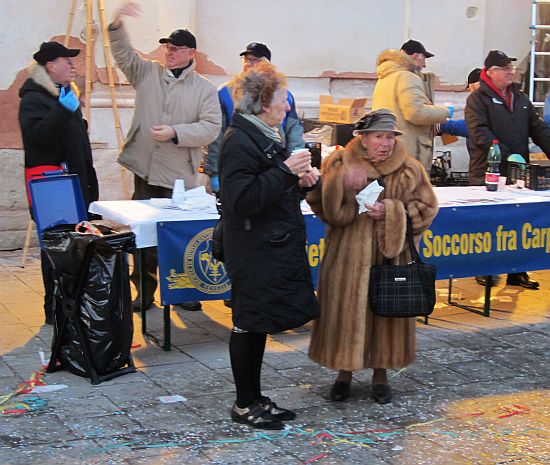
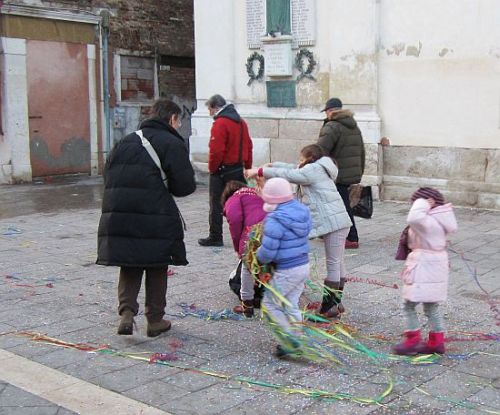

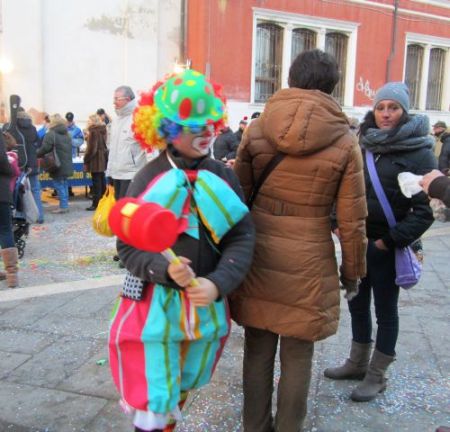
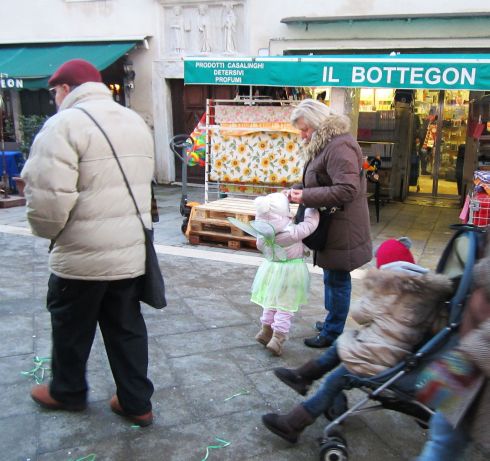
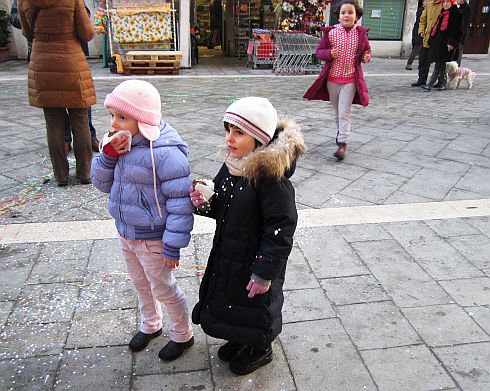
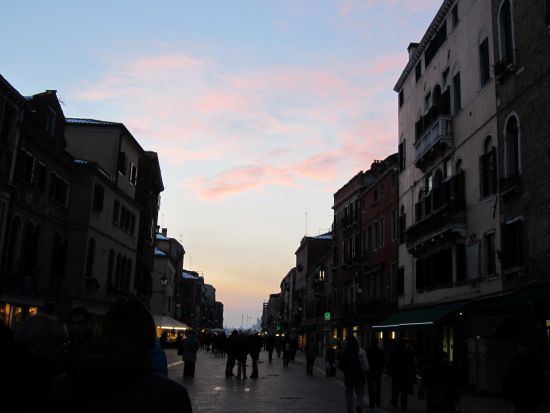
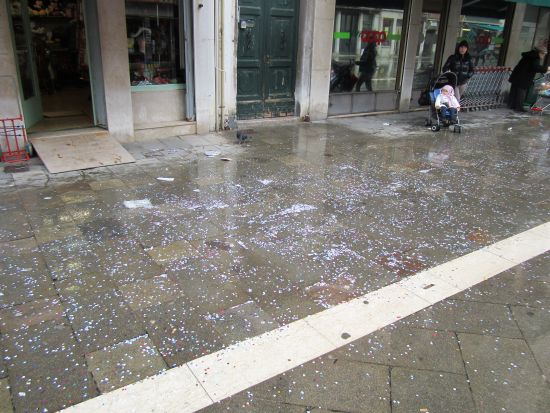
I have nothing positive to say about Carnival, except that it lasts a relatively short time. “Relative” is relative, though, because this year will hold the longest Carnival ever: January 26-February 12, or eighteen days, or almost three weeks. Zounds.
Of course, compared to the Old Days, it is short. Back then, Carnival could last six months. So? Lino says that if the city could make it last from January to January, they’d do it.
Actually, there is one thing which I love about it, and that thing is kids. The neighborhood tykes with their painted-on whiskers and frilly tulle princess costumes and especially their fistfuls of confetti (here called coriandoli).
Erudition alert: Why do we call them confetti and the Italians say coriandoli? Here, confetti refers to the almonds covered with a carapace of sugar, given to guests on festive occasions and colored accordingly (weddings, anniversaries, baptisms, First Communions, etc.).
In the most ancient celebratory days, it was coriander seeds which were used in sweets called confetti, presumably because they had been confected. Documents attest that at weddings or Carnival during the Renaissance, sweets (confetti) containing coriander seeds were often tossed festively at fellow revelers.
In 1875, Enrico Mangili, an enterprising engineer from Crescenzago, near Milan, decided to sell, as a substitute for real coriander-containing sweets, the tiny disks of paper left over from the perforated paper used by the silk industry. Voila’! Symbolic coriander/confetti which were cheap and, as we might say now, rigorously recycled. I can imagine with what enthusiasm the city’s pastry-makers greeted this innovation. If they were inclined to throw anything, it probably wasn’t sugared.
In any case, as you see, the two terms underwent mitosis.
So far, I haven’t seen costumes or makeup, but the Carnival spirit has already begun to simmer along via Garibaldi. Fritole and galani are already on sale, and I’ve heard the distant cries of tiny swarming humans. And they’ve left their gladsome spoor along calli and campi. There is no day so dull that it could not be brightened by these bits of colored paper.
I’ve decided that these snippets are the mystic spores from which Carnival germinates and eventually fruits, producing great harvests of masks and fritole and galani.
To which I say, throw more.
